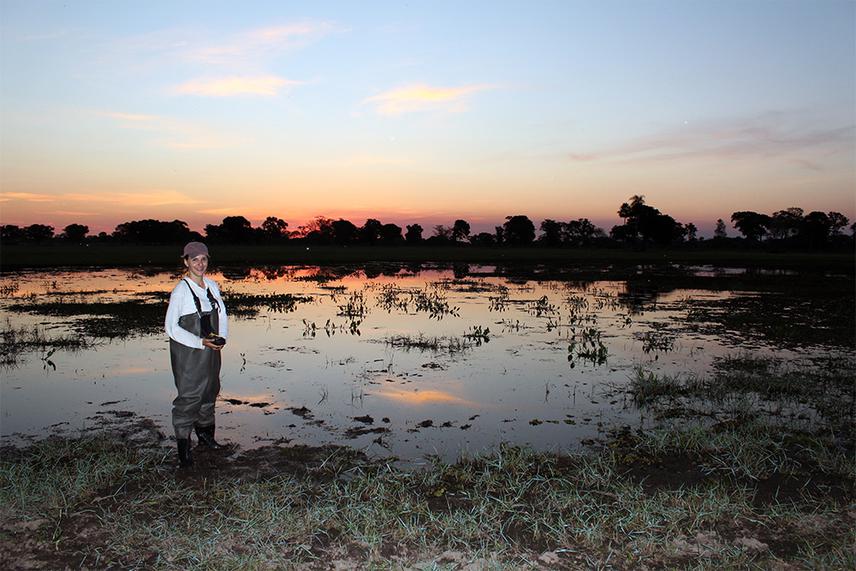Milena Delatorre Nunes
Understanding the influence of livestock and flooding on the phylogenetic and functional structures and diversity of frogs and aquatic plants in Pantanal's ponds

Biodiversity loss on planet has grown exponentially and the damage on habitat caused by cattle ranching is amongst the most important drivers of land-use change in tropical areas. In the Pantanal wetlands, the livestock and annual flood pulse are the main factors that determine the landscape dynamics. Nevertheless, is still unknown the consequences of the livestock and flooding on the phylogenetic and functional structures and diversity of Pantanal’s biota, and if these factors drive the processes that organize the distribution of species of frogs as aquatic plants.
Therefore, we aim to:
(1) understanding what are the processes that determine the formation of aquatic communities in freshwater ponds Pantanal wetlands. In general terms, there are four possible ecological-evolutionary processes that organize the distribution of species:
i) processes related to ecology interactions;
ii) environmental filtering, mediated dispersal of species tolerant to certain conditions;
iii) biogeographic processes;
iv) neutral processes;
(2) understanding if the processes that guide the aquatic communities are influenced by the presence of livestock and flooding, and/or synergy between them. To evaluate the functional and phylogenetic diversity of anuran and aquatic plants in stressful environments due to trampling, excess of nutrients and grazing overload. Verify if the presence of the cattle may limit the occurrence of certain species or even families;
3) selection priority areas for conservation at spatial scale of the study. Eventually, identify possible species use by the local community;
4) quantify and qualify in large-scale the species of aquatic plants and anuran present in Pantanal’s ponds.
Based on this information, we will be able to infer how the livestock and inundation pulse influence on the diversity of these model organisms. The lack of knowledge about the structuring process of aquatic assemblages on the Pantanal is an important limiting factor for the establishing and applying of conservation plans. Therefore, the results here generated, will allow the better comprehension of such process and enlighten better ways for the Pantanal conservation, aiming to maintain the structuring processes, avoiding or reducing activities that change this scenario.